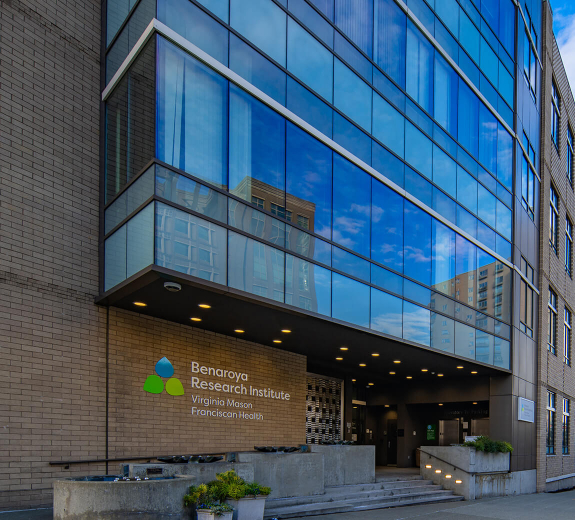Benaroya Research Institute at Virginia Mason (BRI) has opened a new Center for Control of Inflammation and Tissue Repair (CITR) to accelerate technologies for improvement of wound healing. The CITR research team is developing new therapies to improve cell survival in the first hours after injury and new, engineered tissues to repair or replace tendons, ligaments, muscles, and blood vessels. Uniquely, these engineered tissues will be constructed from natural biological materials and, ultimately, will incorporate the patient’s own cells to avert tissue rejection. This research program focuses on helping soldiers with serious and life-threatening wounds as well as civilians who sustain traumatic injuries.
The CITR research team is working in the new and exciting field of ‘tissue engineering’, which combines structurally supportive materials (referred to as ‘scaffolds’) with cells to create tissue replacements that have the form and function of the body’s natural tissue. In contrast to the plastics and metals used in traditional prostheses, the central focus of CITR research is the use of extracellular matrix – the natural substance that holds cells together in every tissue – as scaffolds for tissue replacements. The CITR team is developing engineered tissues that incorporate special forms of extracellular matrix that provide natural elasticity, help cells organize properly, control tissue rejection, and limit scar formation.
"We know the application of this research could ultimately save lives and limbs and there is an urgency to move forward quickly. Senator Patty Murray, who recognized that this work has tremendous value to the nation’s military personnel, has lent important support. Senator Murray supported an appropriation of $2.1 Million for the Department of Defense to provide a grant to BRI to accelerate this remarkable research," said Jack Nagan, Executive Director at BRI.
"We’re focused on providing new therapies to direct the healing process, making use of natural signals that are present within our own bodies. For example, there are methods to improve cell survival that have had dramatic results in organ transplantation and recovery from heart attack that we will use to improve the survival of muscle after a major limb injury. For more extensive injuries involving loss of tissue, we are working on a variety of engineered replacements. The cornerstone of our tissue engineering effort is to use natural extracellular matrices in combination with the patient’s own cells," said Margaret Allen, MD, principal investigator and director of CITR.
The goal of the CITR program is not limited to basic research, but rather is focused on deliverable medical devices and therapies. To this end, Benaroya Research Institute at Virginia Mason is positioned to move advances from the laboratory toward therapies for patients through an approach referred to as translational research. This ‘bench to bedside’ method is accomplished by BRI in partnership with physicians and staff at the Virginia Mason Medical Center, who are experienced in applying breakthroughs in basic science to patient care through controlled clinical trials.
"We are actively seeking new solutions for patients and loved ones who are faced with the prospect of losing a limb or life-sustaining tissue. This is a thrilling project," continued Dr. Allen.
About the Center for Control of Inflammation and Tissue Repair (CITR)
The Center for Control of Inflammation and Tissue Repair combines internationally-known immunologists, extracellular matrix biologists, tissue engineers, and transplant surgeons working together to develop new therapies for conservation, repair, and reconstruction of traumatically-injured tissues, with the goal of achieving a maximum recovery of tissue function.



